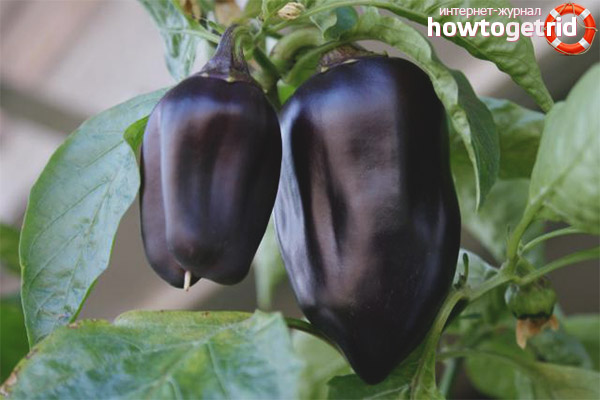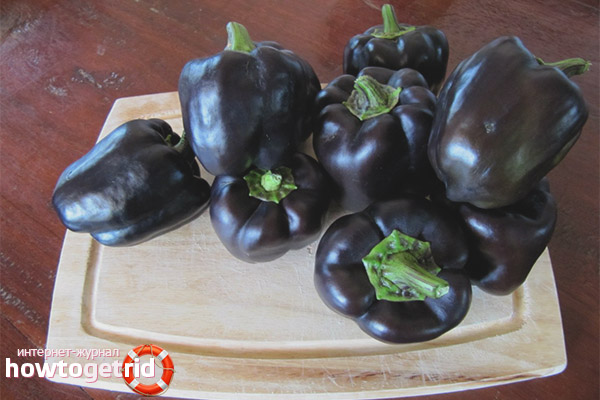The content of the article
The plant is spreading, gives a plentiful harvest in greenhouses and open ground. The fruits of the Cardinal hybrid are fleshy, juicy, the skin is dense. The hearths have even outlines, of moderate hardness, of sufficiently large sizes. There are not many seeds in the cells, a significant amount of provitamin A is accumulated in the pulp.
Description
Cardinal is a mid-sized, precocious hybrid of peppers that is ideal for farming. Cardinal gained particular popularity due to its beautiful fruits. The leaves of the plant are small, dark green in color. Meat pepper. With proper care and favorable conditions, it grows to 130 g. The plant prefers well-lit places. This hybrid is famous for its high palatability. Also, the advantages include the rate of fruit ripening.
Soil preparation
It is best to burn weeds, dried crop residues, branches, straw, etc. and scatter around the garden with a layer of 6-8 cm, and then dig along with fertilizers. Do this for 2-3 years in a row - and work in the garden will be much easier.
You can also scatter coarse sand in the garden with a layer of 2-3 cm and dig along with fertilizers. A good tool is crushed brick. It is sieved through a large sieve and covered with soil with a 2-4 cm layer, and then dug up.
Growing seedlings
For growing pepper, it is recommended to use the seedling method. To do this, in February, the seeds are sown in a box, provide the appropriate temperature (not lower than 23 degrees) until seedlings appear, and then they are kept in a well-lit place and additionally lightened for 3-4 hours in the morning and evening.
- Seeds are sown in individual containers. When 3-4 real leaves grow in seedlings, they can be planted (pecked) in pots or boxes, but less often - at a distance of 5-7 cm.
- So that pepper starts to rise faster, cover crops with glass. They do not allow the appearance of condensate, since overmoistening can lead to soil decay.
- With the onset of constant warm days, seedlings can be moved to sunny greenhouses or film shelters on arches. To a permanent place to land no earlier than the last days of May.
- Seedlings need watering, top dressing, loosening the soil. Pepper is very fond of warmth, humidity and calm weather.
- When growing pepper seedlings in a greenhouse, plants are watered directly under the root.
Watering
Watering is carried out with heated water. The simplest "solar installation" can be made from a black rubber hose. By the way, it is best to water it with rain water, which helps to increase the yield.
Growing pepper in a greenhouse
When choosing a place under a greenhouse, keep in mind that it is completely unreasonable to put it in the shade of large trees, near the northern walls of buildings.
- Pay attention to whether it will obscure vegetable beds, berry beds.
- The optimum temperature for growth and fruiting of the Cardinal 22 hybrid in a greenhouse is 26 degrees. An increase in temperature enhances the respiration of plants, while the accumulated dry matter is actively consumed.
- Starting at 35 degrees, the plants no longer increase the yield, and at 38-40 degrees on sunny days, pollen becomes sterile and the fruits do not set.
- To avoid these unpleasant phenomena, the greenhouse should be ventilated. In the simplest case, the lateral part of the film is lifted in the film greenhouse by screwing it onto the rail.
- In the capital buildings make windows. It is not recommended to plant the bushes close to each other, since with this arrangement there is a risk of infection with rot.
Attention! When ventilating the greenhouse, do not allow drafts, since greenhouse crops do not tolerate them and can become sick.
- During periods of cold snap and prolonged rains, the greenhouse must be aired, making sure that there are no water droplets on the plants.
- You can also adjust the temperature in the greenhouse by shading it. Do not get involved in whitewashing glass or film. Firstly, they deteriorate, and secondly, with cloudy weather and cooling, whitewashing can significantly reduce the temperature and lead to inhibition of plants.
- To shade is best using old blankets, sheets, a semi-permeable film.
- Finding the perfect place for a greenhouse in a small area is extremely difficult. Greenhouses, as a rule, are oriented along the length in the direction from east to west.
- Pepper needs to be formed, the bushes need to be planted, remove the lower leaves, if necessary, tie to the support. During the flowering of pepper, watering is performed every 5 days, the soil is mulched.
- This crop does not tolerate drought. It must be borne in mind that watering should be done directly under the root. Since otherwise there is a risk of sunburn.
- It is also worth remembering that after transplanting seedlings into the ground, in no case should you water it immediately. It is advisable to give seedlings a few days for rooting, only then start watering. The plant will have to be watered somewhat more abundantly during fruit setting.
Landing
Choosing a place to grow this crop is quite problematic. The hybrid will feel uncomfortable in acidic or sandy loamy soils.
The plant should be regularly fed with organic fertilizers, manure. Pepper seedlings are planted only in loose soil.
When growing in the garden, you will encounter a significant problem. The garden plot is usually an open area, which means that it is constantly blown by the winds. This will prevent the plant from feeling comfortable.
This culture is recommended to be planted in the place most protected from the wind.
Ammonium nitrate can be added to the soil, calculated at 40 grams per square meter.
The final stage of soil preparation is saturation with copper sulfate solution. For one bucket of water, you need to take one tablespoon of the substance. One square meter should not accommodate more than three plants.
If the pepper will be grown in a greenhouse, bring plain garden soil.
Disease
Pepper needs to be grown so that it returns to the same place no earlier than 5 years later. As sick plants appear, as well as after harvesting, plant residues must be collected, taken out of the garden and burned.
Plants should not be planted close to each other, with this arrangement, the likelihood of infection with mucous rot increases.
With proper care and favorable weather conditions, the fruits grow to 130 g. This hybrid is distinguished by high palatability. Also, the ripening speed and good fruit transportability can be attributed to the pluses.
Video: how to water pepper seedlings











Submit